When it comes to creating the perfect workout space, gym flooring is often overlooked—but it plays a crucial role in safety, performance, and durability. Whether you are building a home gym or upgrading a commercial facility, choosing the right gym flooring can protect your equipment, absorb impact, and elevate your overall workout experience. In this guide, we’ll break down the most popular types of gym flooring and help you pick the best option for your needs.
Why Gym Flooring Is Important
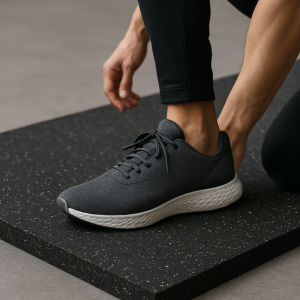
Safety and Shock Absorption
Proper gym flooring helps minimize the risk of injuries by absorbing impact and providing a stable, non-slip surface. Whether you’re lifting heavy weights, jumping, or doing high-intensity interval training (HIIT), the right flooring reduces stress on your joints and cushions any accidental falls. This is especially important in home gyms where concrete floors are common—without proper shock absorption, even basic workouts can lead to strain or injury.

Equipment Protection
Weights, dumbbells, kettlebells, and cardio machines are a serious investment—and dropping them directly onto hard surfaces like concrete or tile can lead to costly damage. Gym flooring, particularly rubber tiles or mats, creates a protective buffer that prevents dents, cracks, or wear on both the equipment and the floor beneath. Over time, this protection can extend the life of your gear and save you money on repairs or replacements.
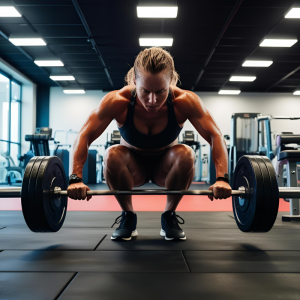
Noise Reduction
Working out can get loud—whether it’s from dropping weights, running on a treadmill, or playing music to keep the energy up. Quality gym flooring absorbs sound and vibrations, helping to reduce noise not just in the room, but throughout the building. This is especially important in shared living spaces like apartments, condos, or upstairs rooms, where minimizing disruption to others is a must.

Hygiene and Maintenance
Sweat, dirt, and bacteria can easily build up in a workout space, especially if you’re exercising regularly. Gym flooring made from non-porous materials (like rubber or vinyl) resists moisture. This makes easy to clean, helping you maintain a hygienic environment. Many options are also mold- and mildew-resistant, which is a huge plus in basement or garage gyms where humidity can be a concern.
Top Gym Flooring Options
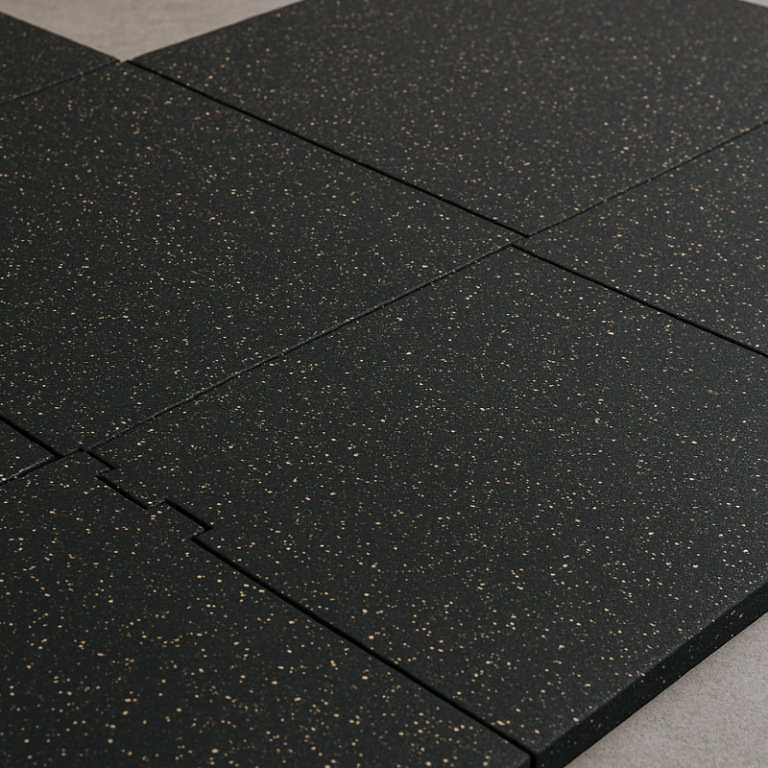
1. Rubber Gym Flooring
Rubber is the most popular and versatile gym flooring option—and for good reason. It’s extremely durable, can withstand heavy equipment and high-impact movements, and provides excellent shock absorption. Its non-slip surface keeps you stable during intense workouts, reducing injury risk. Rubber flooring is ideal for weightlifting areas, CrossFit spaces, and garage or commercial gyms. It comes in interlocking tiles, mats, and rolls, making installation flexible and scalable to any space.
Best for: Heavy lifting, high-traffic areas, all-purpose home or commercial gyms
Pros: Durable, slip-resistant, absorbs shock, long-lasting
Cons: Heavier, can have a rubber smell initially, higher cost
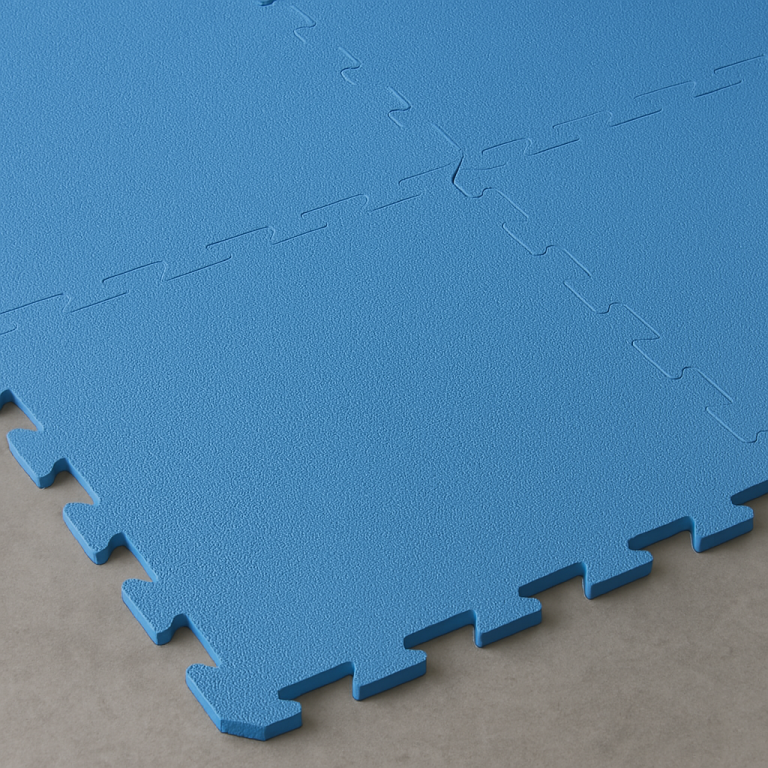
2. Foam Tiles
Foam tiles are a great choice for lightweight, low-impact workouts. They’re soft and comfortable underfoot, which makes them ideal for yoga, pilates, stretching, or bodyweight training. Interlocking foam tiles are easy to install, move, or replace—perfect for temporary or changing workout areas. While they offer excellent cushioning, they are not ideal for heavy weights, as they can dent or wear down over time.
Best for: Yoga, pilates, home workouts without heavy equipment
Pros: Lightweight, affordable, easy to install, good cushioning
Cons: Less durable, not suitable for weightlifting or intense impact
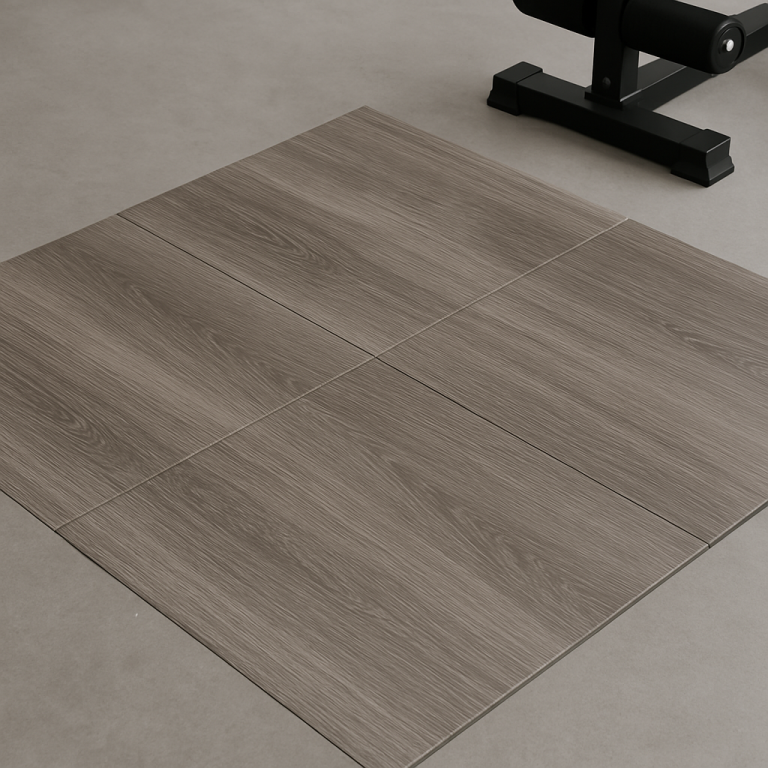
3. Vinyl Gym Flooring
Vinyl gym flooring strikes a balance between functionality and aesthetics. It’s smooth, sleek, and available in a wide range of finishes—from wood-look planks to modern designs. It’s water-resistant, easy to clean, and works well in multi-purpose fitness studios or home gyms where you want a clean, polished look. While not ideal for heavy lifting, it’s solid for cardio, machines, or general movement training.
Best for: Cardio zones, studio workouts, mixed-use spaces
Pros: Stylish, easy to clean, water-resistant
Cons: Limited shock absorption, less durable under heavy weights

4. Carpet Tiles
Carpet tiles are a budget-friendly option that provide a warm and soft feel underfoot, which some users prefer in home gyms or rehab settings. They are best for low-impact activities like light stretching, static movements, or using light equipment. Plus, carpet tiles are easy to replace individually if they get worn or stained. However, they’re not great for heavy sweat, and they absorb moisture, making them harder to maintain in high-usage or humid areas.
Best for: Low-impact workouts, budget-conscious builds
Pros: Affordable, easy to install, comfortable underfoot
Cons: Absorbs sweat, can trap odors, not ideal for weightlifting
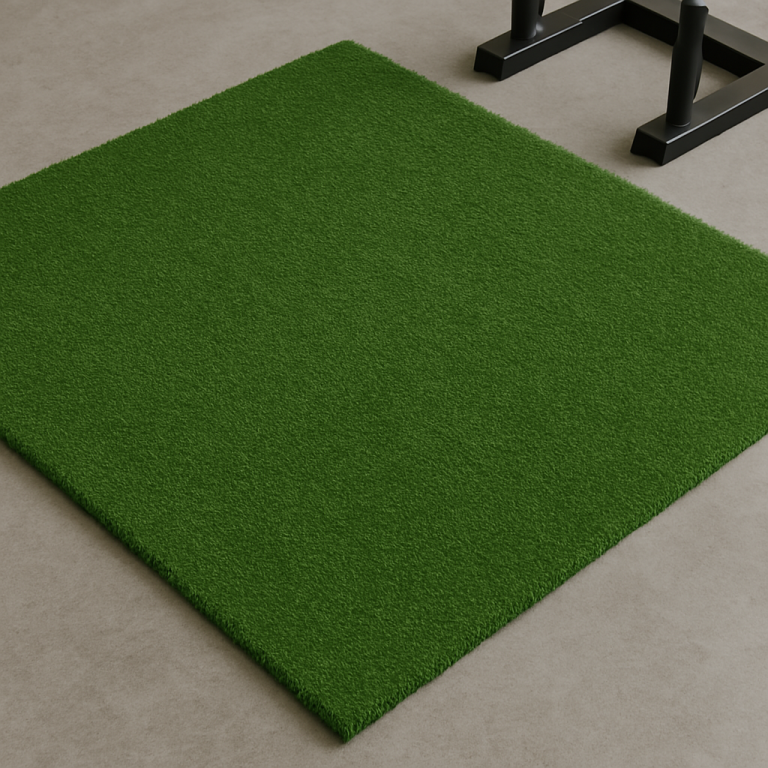
5. Turf Gym Flooring
Artificial turf is designed for functional training and sports-specific movements. It provides a firm but slightly cushioned surface for activities like sled pushes, sprint drills, and agility work. Turf is often seen in performance gyms and training facilities. It offers great traction, is low-maintenance, and adds a dynamic look to your space. While not ideal for traditional lifting zones, it complements other flooring types in hybrid gyms.
Best for: Sled work, agility drills, functional fitness
Pros: Athletic look, durable, great traction, low maintenance
Cons: Not suitable for static weightlifting, higher cost to install
